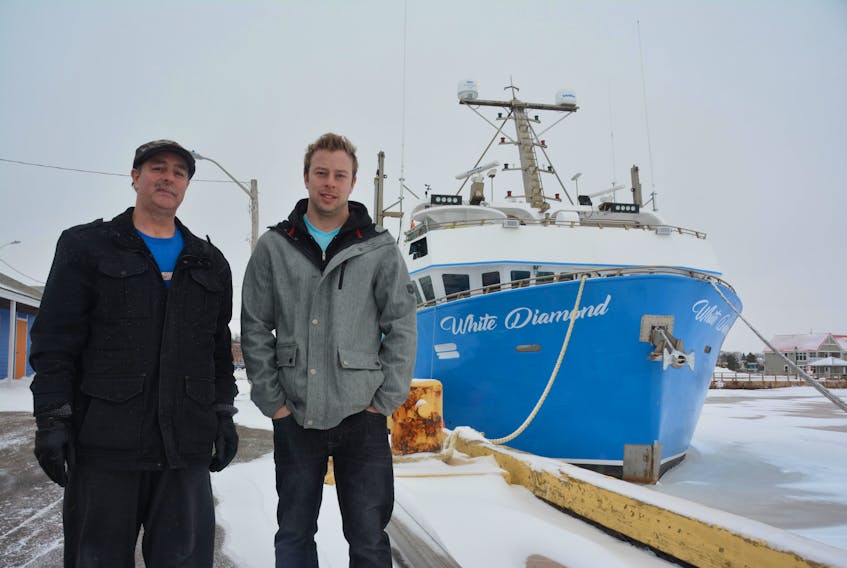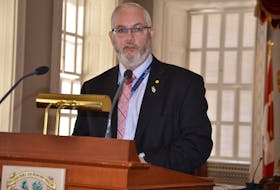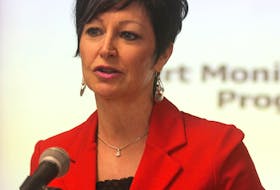Few have logged more nautical miles in Canada’s Arctic over the past six years than David MacIsaac.
But the northward course of the modern-day Arctic exploring captain has been a wandering one.
MacIsaac was supposed to be an accountant. At least, that’s what he was studying at university 30 years ago when his dad called.

David MacIsaac Sr., long a crewman, had bought a lobster licence and gear and was offering his son a job. Like his father, David found physical satisfaction in working on the water.
Instead of a cubicle, the Gulf of St. Lawrence would now be his office and Hardy’s Channel on Prince Edward Island would be his home port.
That was life for a while. And it was so good that MacIsaac prepared to double down on the fishery, selling the licences he had so he could buy a crab licence from a New Brunswick fisherman.
“But the guy in New Brunswick backed out of the deal after I had sold everything,” said MacIsaac.
With a wife and four children to support and no intention of becoming a bookkeeper, MacIsaac went looking for licences to buy.
He found a 23-metre dragger going with a shrimp and crab licence for offshore Newfoundland, outside Canada’s 200-mile territorial limit.
“She had her reservations, but said ‘OK, we’ll try this,’” said MacIsaac of his wife’s reaction to the new licences.
It meant trips of eight to 10 days out of St. John’s.
“You don’t watch the weather. You go and deal with whatever’s dealt you when you get out there,” said MacIsaac.
After the first season he sold the dragger and bought the White Diamond, a unique vessel.
Built in Nippard’s Harbour to work in the spring ice, the 20-metre ship has a Kevlar (the material bulletproof vests are made from) hull and a stainless-steel deck.
It’s a strong sea boat.
In it, MacIsaac and his crew have ridden out a hurricane 480 kilometres from shore, rising and falling in 10-metre seas.
“It wasn’t a lot of fun,” said MacIsaac. “I just let her lay the way she laid and drifted for 36 hours so the motion of the boat would be less uncomfortable. I thought she might drift side on, but she kept her rear quarter-panel to it and rode well.”
But a Grand Banks fisherman wasn’t to be the last waypoint of MacIsaac’s career.
Because when the Arctic Research Council’s captain had a heart attack, they needed a new one right away.
And not just any captain would do. It takes a special breed of skills and nerves to work in the uncharted Arctic.
“The scientists are more like fair-weather fishermen. If it starts blowing over 25 knots they get worried their test tubes will tip over or their laptops will get smashed, so you get in behind an island and drop anchor.”
David MacIsaac about his job as captain of a research vessel
Atlantic Canada’s northern fishery, which sees boats and crews pushed to extremes in the North Atlantic and in the ice, has been providing these captains since Robert Peary hired Newfoundland sealer Bob Bartlett for his North Pole expeditions.
MacIsaac walked in the door of his Prince Edward Island home on a Monday and got the call on a Tuesday. He Googled the Arctic Research Foundation after saying “yes” on the phone to a man he’d never met.
“I figured I’d always wanted to see a polar bear,” said MacIsaac.
The non-profit Arctic Research Foundation is seeking to fill a gap in capacity to work in the Canadian Arctic. It leases space to universities and research organizations on board boats it sends to the Arctic for the short season, running from Aug. 1 to mid-September, when you don’t need an icebreaker to operate there.
For the past six years MacIsaac has captained the White Diamond on expeditions north for the foundation.
“The scientists are more like fair-weather fishermen,” said MacIsaac. “If it starts blowing over 25 knots they get worried their test tubes will tip over or their laptops will get smashed, so you get in behind an island and drop anchor. When you’re 300 miles off, fishing, there’s nowhere to hide.”
The White Diamond leaves the main charted routes in the Arctic and MacIsaac’s eyes spend a lot of time on the depth sounder, making sure they don’t hit a rock.
There are other stresses there, too.
The ports in the central Arctic are Joe Haven and Cambridge Bay, meaning boats operating there have to be able to sustain themselves for long periods away from the wharf.
The White Diamond carries 35,000 litres of fuel, enough to feed its two 500-horsepower diesel engines for about a month.

After six years captaining for the Arctic Research Foundation, MacIsaac is in the process of selling them the White Diamond. Over the past eight months the foundation has put $2 million into refitting it from a crab boat into a dedicated research vessel.
Some 30 tradespeople have worked on it in Summerside Harbour, closing in the back deck, turning the hold designed to carry 36 tonnes of crab into accommodations for 16. A surveying system has been installed they hope will provide accurate-enough measurements that they can be used to expand Canada’s Arctic charts.
“We’ll be charting everywhere we go,” said MacIsaac, who will continue as the vessel’s captain.
And a new crew member, Daniel MacIsaac, will be aboard for this summer’s trip. David’s son, 24, a graduate of Holland College’s marine program, now has his captain’s ticket, too. He’ll get an earlier start on Arctic exploration than his father did. And maybe they’ll both get to see their first polar bear this summer.
“Six years in the Arctic and I haven’t seen one yet,” said MacIsaac. “But we’re supposed to go to Churchill this summer and that’s supposed to be the polar bear capital.”









